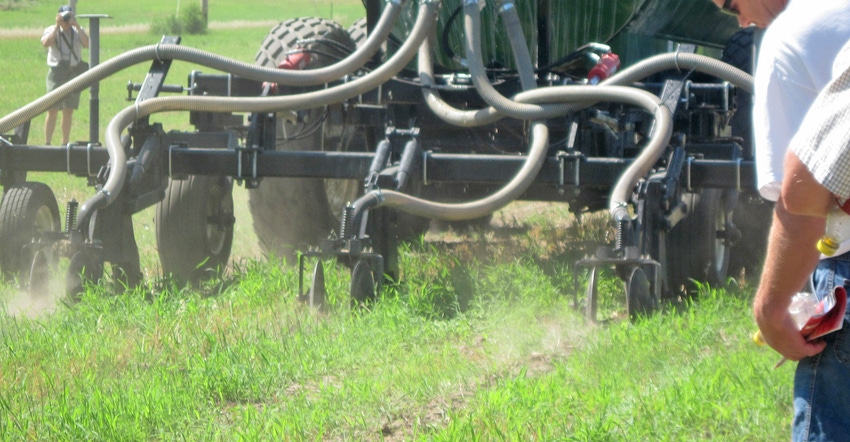February 20, 2018

By Rebecca Larson
Phosphorus is a critical nutrient for crop growth, but when it is lost to the environment, it can degrade surface water quality and contribute to issues such as algae blooms. Managing manure phosphorus is critical to reducing water quality impacts. It is important to understand that you can never eliminate phosphorus; you can only control where it ends up. Therefore, it is critical to look at an entire livestock system to most effectively manage manure phosphorus.
Phosphorus is a vital component of an animal’s diet. The U.S. National Research Council recommends dietary phosphorus levels for cows of 0.32% to 0.38%, depending on milk production. Excess phosphorus fed to the cows is excreted in manure, where much becomes soluble phosphorus. This form is more prone to loss and has a greater impact on surface water. Limiting this excess is the first step in managing phosphorus.
Increasing milk production by improving feed efficiency can also reduce the phosphorus management burden per unit of milk produced. The amount of manure produced per unit of milk decreases with increased feed efficiency and greater milk production per cow; therefore, there will be less manure phosphorus to manage per unit of milk produced.
When land-applying manure, you must balance manure phosphorus with crop uptake, as well as use conservation practices to limit phosphorus transport to surface waters. Applying manure phosphorus at a rate that matches crop uptake reduces phosphorus soil buildup. This is key, as an increase in soil phosphorus is known to increase losses during a runoff event from a given field. Therefore, is it critical to have the required land base to apply the manure phosphorus produced at your facility and to use nutrient management planning to guide your application.
The second part of managing field application is to use conservation practices to reduce losses from the field. Applying manure at periods that avoid runoff and increase infiltration, and moving manure phosphorus away from the field surface (for example, manure injection) are also critical to reducing manure phosphorus runoff losses. Conservation practices such as buffer strips can also be used to reduce runoff from reaching surface waters, as well. All these practices used together are required to limit the impact to surface waters.
Manure processing systems can help manage manure phosphorus. Remember that these systems can only change the form and concentration of phosphorus in manure streams and cannot eliminate the phosphorus completely. Many types of manure separation systems are available. These systems divide manure into multiple streams with different phosphorus concentrations.
For example, in a screw press, manure is divided into a solid stream and liquid stream; the phosphorus in the solid stream is more concentrated and can be transported farther at a lower cost per unit of phosphorus. There are systems that can divide manure into streams in which one of the streams has no phosphorus. However, that means another stream will have an even higher concentration to account for this. This is useful when you do not have sufficient land base to apply the manure phosphorus and can reduce the cost of transport for the concentrated stream per unit of phosphorus.
Developing strategies
Ongoing work at University of Wisconsin-Madison hopes to be able to provide producers with strategies that are the least costly in separating and transporting manure phosphorus. When selecting a manure processing technology, it is important to understand what you want the technology to achieve; then select the most appropriate system to achieve that goal while also considering the economic implications. Understanding the details of the technology is important.
For example, many believe that digesters reduce manure phosphorus. In reality, digesters change the form of the phosphorus but not the total amount.
It is commonly the separation system after the digester that helps people better manage phosphorus. Understanding this would allow you to install just the separation system if your goal were to improve phosphorus separation and management.
Managing manure phosphorus is not a simple task. There are many required components, and there is no silver bullet that can reduce losses. We must continue to work at all pieces of the system to manage our manure successfully without impacting water quality.
Larson is a University of Wisconsin-Madison assistant professor and Extension specialist in biological systems engineering. This column is provided by the UW Extension Dairy Team.
You May Also Like




